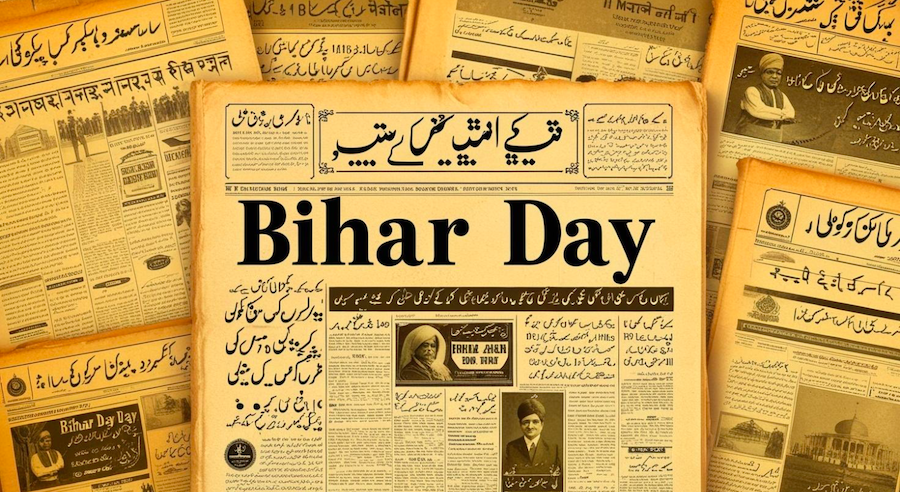Mahendra Ved
WHEN two nations that, at 2.5 billion, account for over a third of the global population, debate on how to arrest a baby boom, the world must take note.
It is important because China and India also happen to be the world’s fastest growing economies, the highest energy consumers and, if the Western world’s propaganda is to be believed, the environment’s biggest polluters.
With some similar fault lines bedevilling their population planning strategies, their task of correcting them acquires a sense of urgency.
The two recently met at a population conference in Tianjin to mark “Seven Billion Population Day”.
Both have registered a huge rise in male-over-female births, or what demographers call the sex birth ratio, that is distorting socio-economic development, with bad portents for the future.
In both countries, this ratio is caused by a marked preference for boys as farm or factory hands and as bearers of the family line in largely patriarchal societies.
In India, it has been continually declining since 1961. But deeply disturbing statistics show a fall from 927 in 2001 to 914 so far this year — the worst since Independence.
In China, this phenomenon has been compounded by stricter enforcement of the one-child policy through the 1980s.
The implementation of China’s family planning policies “is fast becoming a major national scandal with child abduction, child trade and ‘social compensation’
payments to corrupt local officials for violation of the one-child policy”, say two scholars writing on East Asia Forum.
They are Zhongwei Zhao, a professor at the Australian Demographic and Social Research Institute, Australian National University, and Chen Wei, with a PhD from ANU, of the Centre for Population and Development Studies, People’s University of China.
They say that the growing gender imbalance is “an unfortunate and unintended consequence” of engineering the contraction of China’s population.
“It will have a big impact on China’s future demographic and social development. The imbalance of males and females in the marriage market will be intense with many unwelcome social and psychological consequences. The pressure to reverse or ease family planning policies grows year by year.”
China’s population is expected to grow from just over 1.3 billion to 1.46 billion in 2030, after which it is expected to decline slowly, to around 1.42 billion in 2050.
Its working population, currently around 840 million, will rise in the next decade to around 910 million but will then decline very rapidly to around 790 million by 2050.
The most dramatic change is an explosion of the over-65 population and a decline in the share of the young. China’s median age will climb over this period from around 24 to around 45.
The recently conducted Census of India places the population at 1.21 billion and projects it at 1.4 billion by 2026. With only 2.4 per cent of the world’s landmass to support 17 per cent of its population, India’s need for population stabilisation cannot be overemphasised.
India is likely to miss its target of reaching population stabilisation by 2045. Now, the government is looking at 2060 as a plausible target.
India had set itself the goal of attaining replacement levels of fertility — 2.1 by last year. However, by the end of last year, only 14 states achieved the target.
Six states have fertility rates as high as three to four. This has made the government estimate that instead of reaching population stabilisation in 2045 (1.45 billion), it will reach the target (1.65 billion) around 2060.
“The steady decline in total fertility rate is encouraging, with 14 states out of 25 already achieving the replacement fertility level of 2.1. We are focusing on the high fertility areas for population stabilisation,” Health Minister Ghulam Nabi Azad said at Tianjin.
The divergence in the Indian and Chinese approaches is clear. After the Chinese experience with the one-child norm and other laws, India is not even contemplating laws to curb the baby boom. No coercion, only incentives.
Azad said: “We can achieve our target of population stabilisation by improving contraceptive use and not by any legislation.”
That makes the task more difficult, but not impossible. Some of the new finds are encouraging, such as the steady decline in the total fertility rate, which is currently at 2.6 — a 42 per cent decline from the mid-1960s.
Northeastern India, boxed in by Bhutan, Bangladesh, Myanmar and China, has not allowed its isolation to come in the way of education.
With a bit of help from far-off New Delhi, but more with that of Christian missionaries and self-help, it has evolved its own knowledge dynamics. Among the success stories on the literacy front are two states in the region, Mizoram and Tripura. Held back by militancy earlier, they have surged ahead.
India is more literate than before. The literacy rate has climbed from 64.83 per cent in 2001 to 74.04 per cent this year. While literacy among males rose from 75.26 per cent to 82.14 per cent, an increase of 6.9 points, it rose among females from 53.67 per cent to 65.46 per cent — a much better increase of 11.8 points that is sorely needed.
Of the additional literates, women (110,069,000) outnumber men (107,631,940). The gap of 21.59 percentage points between men and women in 2001 now stands reduced to 16.68 points.
This confirms frequent reports, earlier viewed sceptically, of education spreading among women, particularly in the urban areas. More girls are completing school and even going to college than before. The marriage age is thus pushed up.
Notionally, even a slight push in the marriage age should delay motherhood, hopefully to a more mature age and, hopefully again, result in fewer and healthier children.
The other day, I heard of a mother of a young married son returning without the gauna — the north Indian custom of bringing home the child bride once she reaches puberty. The elders of the bride’s village stopped the boy’s family from taking the girl away, just when they were about to board a train. The girl, they pleaded, was keen to complete her schooling.
Age-old traditions take their own time to go. It is a long process, and there are no short cuts, save to create greater awareness through education and communication. This, at least, is true of India.
Curtusy: New Straits Times, Malaysian Edition.









